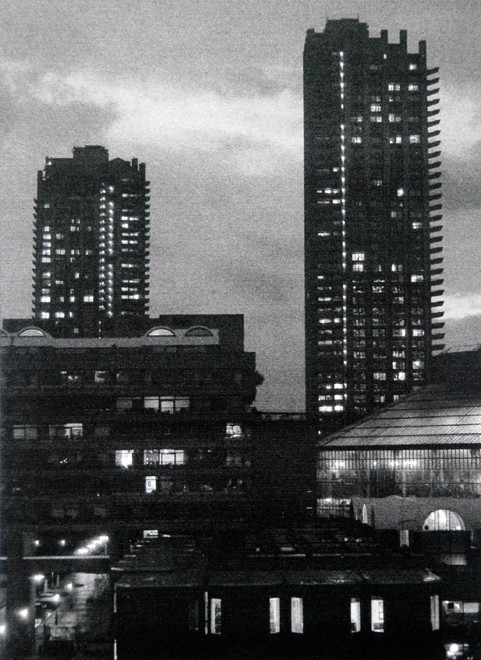Barbican Towers
In 2006 I moved from Cornwall to London - from the granite moors above Penzance to Catford and then to the concrete towers, pillars and walkways of The Barbican in the City of London. I was fascinated by the Barbican and tried to make sense of it through a series of watercolours - some about the buildings and the estate and some about the city context of the Barbican.
The Barbican estate has over 2,000 flats with a bewildering range of designs and buildings. It is ine of the largest housing developments in Europe. A bomb site (see The Barbican Raid) until the 1960s it was only by a mistaken vote in the City of London Corporation - the ushers voted and their votes swung the decision for housing rather than office development - that the Barbican was born. At the time the towers were the highest in London and it was believed they would sink into the underlying London clay. It is doubtful, outside of power stations and dams, that there is a bigger concentration of conrete in the world - and yet it is made with black granite chippings from the Penn Lee quarry and most of it has been pick hammered to give it a very particular surface.
One of the ironies of The Barbican is that although it was designed with a largish element of public* housing it is now one of the most desirable places (certainly amongst its many afficianados) to live in or near the City of London. The City of London Corporation still owns 10% of The public housing is going and prices for a one room studio are now over £250,000.
*There seems to be some confusion about the meaning of 'social housing' but it is now generally taken to be housing owned and let by social landlords - either local authorities or housing associations - at a non-market (ie subsidised) rent and allocated through a local authority housing allocation scheme based on housing need. In the 2001 census there were 922 'socially rented' flats/maisonettes in the City of London, 611 of these were owned by the local council, presumably the City of London Corporation (Graph F 3.2) There are claims that the Corporation currently owns 10% of the flats within the Barbican and that these are being sold off as there occupants move on - so to speak. I have as yet not been able to ascertain the Corporation's historical holdings of flats within the Barbican since the estate was developed and whether these were ever let at non-market rents.







